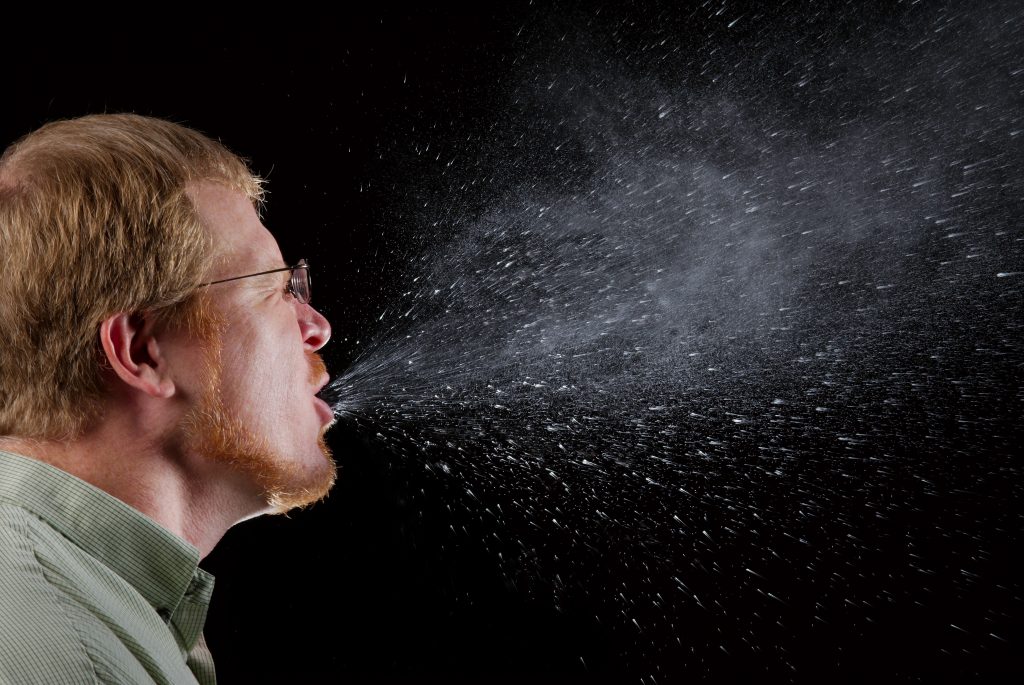




Improving hygiene or microbiological cleanliness is a significant method to prevent the spreading of infections in indoor environment, especially in healthcare facilities. In addition, clean water supply and appropriate sewerage disposal system are important. In the past, cramped spaces, poor hand hygiene and vermin increased infection epidemics in the population.
Many species of microorganisms live on mucous membranes where they form a normal flora. None of these tissues, however, is infected. Healthy microbial growth is vital on the skin and mucous membrane as it protects us from pathogens.
Most of the microbes we come across in our daily lives do not cause diseases. However, a microbe that is normally harmless might cause an infection to human with a reduced immunity, for instance, because of illness. For this reason, hospitals have high standards for cleanliness and visitors must take care of proper hand hygiene. Hospitals have special units, such as operating theaters, where hygiene levels need to be higher than in other spaces.
…
…
For many microbes, the transmission can happen in several ways. For instance, influenza spreads though droplet infection or as indirect contact infection though surfaces. Norovirus spreads as indirect contact infection though surfaces. Many microbes move from human to human though contact surfaces: from organs to hands, from hands to contact surfaces and from contact surfaces to other humans’ hands, from where they migrate to the organs.
Microorganisms that penetrate the skin or the mucous membrane barrier reach subcutaneous tissue, muscles, bones, and body cavities (e.g. peritoneal cavity, pleural cavity, bladder), which are normally sterile (i.e. contain no detectable organisms). If a general or local reaction to this contamination develops, with clinical symptoms, there is an infection.
Microorganisms can be transmitted from their source to a new host through direct or indirect contact, in the air, or by vectors. Vector-borne transmission is typical of countries in which insects, arthropods, and other parasites are widespread. These become contaminated by contact with excreta or secretions from an infected patient and transmit the infective organisms mechanically to other patients.
The most significant problem causing microbes spread easily through contact surfaces. In addition to proper hand hygiene, appropriate cleaning and disinfection, new innovative actions are needed to prevent the spreading of infections in indoor environments. Here are some examples:

Airborne transmission occurs only with microorganisms that are dispersed into the air and that are characterized by a low minimal infective dose. Only a few bacteria and viruses are present in expired air, and these are dispersed in large numbers only as a result of sneezing or coughing. Direct contact between patients does not usually occur in health-care facilities, but an infected health-care worker can touch a patient and directly transmit a large number of microorganisms to the new host.
The most frequent route of transmission, however, is indirect contact. The infected patient touches—and contaminates—an object, an instrument, or a surface. Subsequent contact between that item and another patient is likely to contaminate the second individual who may then develop an infection. During general care and/or medical treatment, the hands of health-care workers often come into close contact with patients. The hands of the clinical personnel are thus the most frequent vehicles for nosocomial infections. Transmission by this route is much more common than vectorborne or airborne transmission or other forms of direct or indirect contact.
ECDC. Microorganisms and antimicrobial resistance in HAIs. https://www.ecdc.europa.eu/en/healthcare-associated-infections-acute-care-hospitals/database/microorganisms-and-antimicrobial-resistance-hais
RT 91-11249. Hygiene in indoor spaces. General principles. Guideline of the Finnish Building Information Association. (in Finnish)